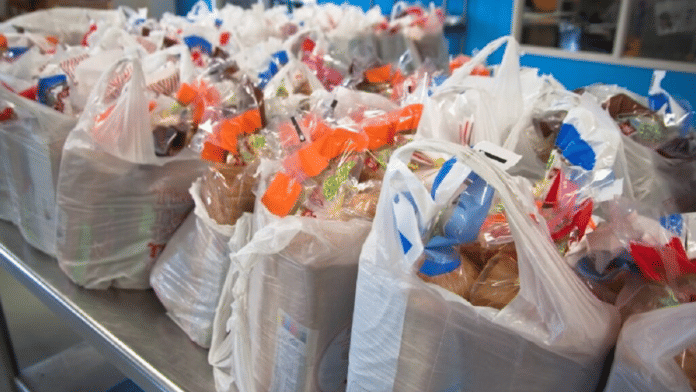Thank you dear subscribers, we are overwhelmed with your response.
Your Turn is a unique section from ThePrint featuring points of view from its subscribers. If you are a subscriber, have a point of view, please send it to us. If not, do subscribe here: https://theprint.in/subscribe/
Uncomfortable wastes are used menstrual hygiene products and sanitary litter. In the domestic waste stream adult disposable diapers are the most conspicuous uncomfortable waste. Second in line are used sanitary napkins and third are soiled children’s diapers.
Many of us are not sure how to manage uncomfortable wastes because of the materials they are made of and what they hold within.
Adult disposable diapers
A diaper is like underwear meant to absorb urine and hold faeces. They make use of precious resources like crude oil, trees and water. They contain chemicals like Sodium polyacrylate gel- a known soil and water contaminant, highly toxic Dioxin, and Glyphosate – an herbicide that the World Health Organization classifies as “probably carcinogenic”. They are a major contributor to landfill waste and if incinerated cause pollution.
Disposable Sanitary napkins
Super Absorbents Polymers are the main component of disposable sanitary napkins. Movie Padman made the use of sanitary napkins popular. Over 60% of Indian women use disposable sanitary napkins. This has led to a many-fold increase in the total domestic waste produced. This uncomfortable waste is non-biodegradable because of the materials it’s made of.
Children’s diapers
They are smaller than the adult diapers and less absorbent due to their higher changing frequently. Its two parts are (i) the core made of wood pulp and synthetic viscose and (ii) outer shell made of some form of plastics. Urine is absorbed & faeces stored in the core. The outer shell is to stop leakages. They are a major contributor to plastic pollution.
Way Out
Replace disposable sanitary napkins with reusable cloth napkins or menstrual cups. Replace disposable adult and children’s diapers with reusable ones.
A menstrual cup is a small, flexible container that’s inserted into the vagina to catch menstrual blood. Once full, the cup is emptied into the toilet, cleaned and worn again. Their contribution to municipal solid wastes and landfill waste is nil. They are less expansive, allow a greater range of movement, and last almost a life time. landfill sites is nil
In the olden days and even during my child’s pre toilet training days diapers were made from old used cotton cloth. Child’s wardrobe was ready much before he came to this world. Long pregnancy months were used to prepare for child’s arrival. The old khadi kurtas, dhoties and pajamas collected over a long time were converted to 50 diapers and 25 jhablas.
The cloth diapers helped us know the wetness immediately. They did not smell because of the frequency of change. There never were any allergic skin reactions. They led to early toilet training and zero possibility of boy’s testicles getting over heated. The child could not take them off as children with disposable diapers could. Washing them was not a big deal. They were rinsed, soaked in fabric cleaner, scrubbed, rinsed till all traces of fabric cleaner were out, dried in strong Sun and folded to be used again. That simple, ecofriendly and health friendly method continued till the child was toilet trained in less than two years.
Elderly adults start using disposable diapers as and when they lose control over certain muscles of the body. Once on diapers they keep using them for rest of their lives. The younger adults start using disposable diapers either due to medical reasons or altered lifestyles. As the adults use diapers for many more years than children the adult disposable diapers form the most conspicuous part of domestic and municipal solid wastes.
Adults using diapers can easily get out of the habit by exercises, medication and altered lifestyle.
Pelvic Floor Exercises strengthen the pelvic floor muscles and help improve bladder control over time.
Some medications can help manage incontinence by reducing urgency or increasing bladder capacity. Lifestyle Changes like Dietary adjustments, fluid management, and scheduled bathroom breaks can help manage symptoms.
Adults with medical conditions also have alternatives to disposable diapers. It depends on what they are trying to accomplish. If they are trying to contain leaked urine, there are absorbent under wears, reuseable pads and catheters.
Reusable incontinence underwear can absorb bladder leaks, and after going through the wash, can be used again. It has a pad built into them that is able to wick away and absorb leaks.
Reuseable pads work like absorbent under wears but are lighter with lower absorbency meant for people with lower incontinence.
External catheters collect urine during urinary incontinence. They are an alternative to indwelling catheters, which are inserted into the bladder. They are made of latex or silicone and come in different shapes, Sheath catheters like a covering, Pouch catheters like a pocket and Tillacare Uri cap like a cap.
Last Words
Uncomfortable waste can be managed easily if alternatives .are chosen over the highly publicised conventional sanitary products.
These pieces are being published as they have been received – they have not been edited/fact-checked by ThePrint


